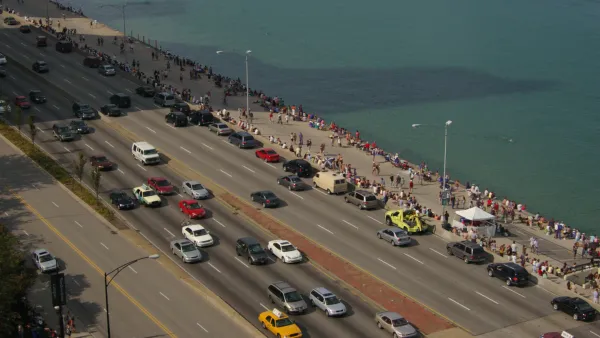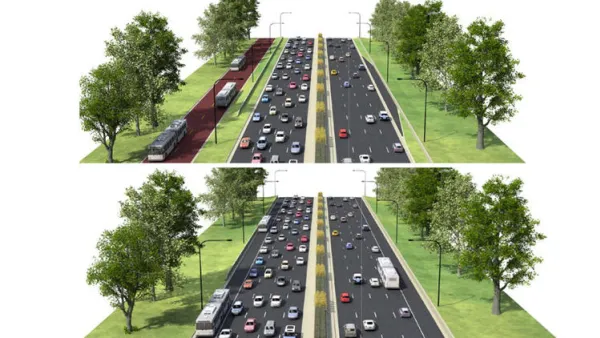This week, the Illinois DOT kicked off a set of public meetings to "redefine" Chicago's Lake Shore Drive. At the first meeting, a decidedly pro-car and anti-bicyclist sentiment crept into the comments.
As we noted earlier this week, a coalition of Chicago advocacy groups, including the Active Transportation Alliance, the Metropolitan Planning Council, and the Congress for the New Urbanism released a set of recommendations last week to guide the public process. The platform recommends increasing public access to the waterfront, providing more access for cars to the street grid, and slowing traffic speeds from 40 mph to 35 mph. Advocates say that without public support for these ideas in whole or in part, the roadway will likely continue on "a slow shift towards a superhighway."
But at the debut meeting, many of the Chicagoans who attended (at least according to the Chicago Tribune) were mixed on their support of these ideas. “Bicyclists think they have priority in sidewalks and other places, not the bike path...(c)yclists do not yield," complained one post-it noter. Another person quoted in the article seemed to think doing anything different was a bad idea. "Just resurface it," they suggested. "Save the taxpayers money." Still, there seemed to be widespread support for light rail along Lake Shore Drive.
Supporters of the coalition's platform will have more chances to get their voice heard - initial meetings continue this week.
FULL STORY: Bicyclists take a beating at Lake Shore Drive revamp meeting

National Parks Layoffs Will Cause Communities to Lose Billions
Thousands of essential park workers were laid off this week, just before the busy spring break season.

Retro-silient?: America’s First “Eco-burb,” The Woodlands Turns 50
A master-planned community north of Houston offers lessons on green infrastructure and resilient design, but falls short of its founder’s lofty affordability and walkability goals.

Delivering for America Plan Will Downgrade Mail Service in at Least 49.5 Percent of Zip Codes
Republican and Democrat lawmakers criticize the plan for its disproportionate negative impact on rural communities.

Test News Post 1
This is a summary

Test News Headline 46
Test for the image on the front page.

Balancing Bombs and Butterflies: How the National Guard Protects a Rare Species
The National Guard at Fort Indiantown Gap uses GIS technology and land management strategies to balance military training with conservation efforts, ensuring the survival of the rare eastern regal fritillary butterfly.
Urban Design for Planners 1: Software Tools
This six-course series explores essential urban design concepts using open source software and equips planners with the tools they need to participate fully in the urban design process.
Planning for Universal Design
Learn the tools for implementing Universal Design in planning regulations.
EMC Planning Group, Inc.
Planetizen
Planetizen
Mpact (formerly Rail~Volution)
Great Falls Development Authority, Inc.
HUDs Office of Policy Development and Research
NYU Wagner Graduate School of Public Service




























